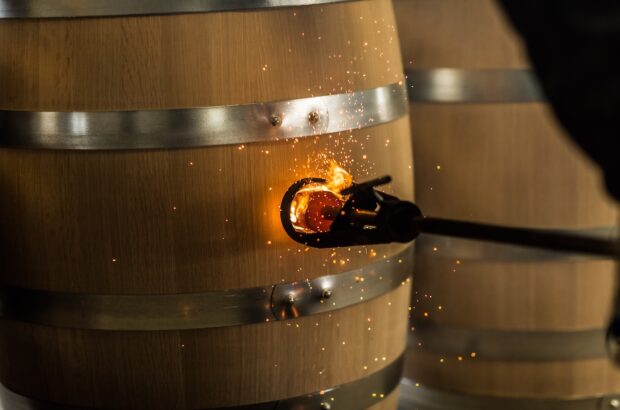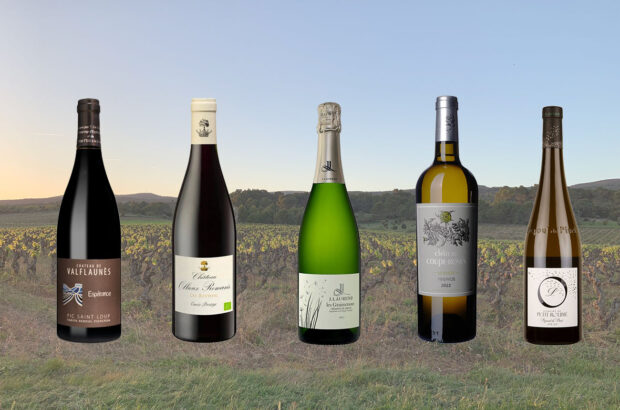- The revival of Douro wines can be traced back to the 1950s when Fernando Nicolau de Almeida, returned from a visit to Bordeaux with the bright idea of making an unfortified red wine from Port grapes.
- The extensive replanting of ‘A’ and ‘B’ grade vineyards by varietals lends new opportunities to winemakers, both for Douro reds and Port.
- Over recent years, much innovation has taken place at single estates, or quintas, who have broken out from cooperatives to make their own wine.
Next to Port, unfortified Douro reds have always been considered a poor relation. For much of this century, Port shippers adopted Samuel Johnson’s macho ‘Claret is for boys, Port for men’ attitude, looking down their noses at so-called Douro ‘table wines’. Often they had good reason. Grapes from lowly ‘E’ and ‘F’ rated vineyards, along with a crude approach to winemaking, meant the wines never stood a chance. All the care and attention was heaped on the wine the shippers understood, Port, anything else was seen as something of a curiosity.
But the shippers, a few of whom still retain something of this attitude, need no reminding that Port began as a dry red wine. Until the first part of the 18th century most of the wine exported from the Douro was fermented dry and occasionally bolstered with the addition of a small amount of spirit to help stabilise it for export. By all accounts the wines were tough, tannic and austere, earning the nickname ‘blackstrap’ in comparison to the more refined red wines emanating from Burgundy and Bordeaux. From the outset, the practice of adding grape spirit or brandy to wines from the Douro was controversial and even as late as the 19th century there were those who advocated a return to dry, unfortified Douro reds. Baron Forrester, the great mid-19th century Douro eclectic still eulogised by modern-day Port shippers, was one such advocate but his words went unheeded and from then on unfortified ‘light’ wines were entirely neglected in favour of Port.
The revival of Douro wines can be traced back to the 1950s when the then technical director of the Port shippers Ferreira, Fernando Nicolau de Almeida, returned from a visit to Bordeaux with the bright idea of making an unfortified red wine from Port grapes. The story is a triumph of strength over adversity. With no electricity on hand, a rudimentary temperature control system was rigged up by passing the fermenting must over blocks of ice shipped 120 kilometres upriver from Oporto, packed in sawdust to prevent it from melting in the late summer heat. ‘We made good wine by mistake,’ declared Nicolau de Almeida who, following the launch of the first vintage of Barca Velha, rapidly became a legend in his own lifetime. Over succeeding years technology improved considerably and Barca Velha became less of a hit-and-miss affair. During the 1960s and 1970s it became established as a Portuguese ‘first growth’, commanding high prices at prices at home and abroad.
Following the success of Barca Velha, other producers began to sit up and take notice and a flurry of wines appeared on the market. In recognition of this the region was officially demarcated for unfortified red and white Douro wine in 1979, more than two centuries after it was first delimited for Port. Initially, many Douro wines were viewed as no more than a by-product of Port, made from grapes left over after the complicated annual beneficio (authorisation) has been satisfied. For example, in a productive year under half the region’s grapes would be destined to produce Port, with the remainder (often those from the cooler, higher vineyards) being left unfortified to make red wine. To begin with, down-at-heal cooperatives on the margins of the region did little to enhance the region’s reputation, bottling and marketing some thin, astringent wines that were little better than the vineyard workers’ hooch of yesteryear. Then, gradually, and largely with European Union (EU) help, production in the Douro began to be transformed; and since the late 1980s a whole new horizon has opened up.
The extensive replanting of ‘A’ and ‘B’ grade vineyards by varietal (as opposed to the old muddled approach) lends new opportunities to winemakers, both for Douro reds and Port. Touriga Nacional and Tinta Roriz, both among the so-called ‘top five’ grape varieties identified under the replanting scheme, have proved eminently suitable for Douro reds. In the case of Tinta Roriz this is perhaps not all that surprising as, under its other names Tempranillo and Tinto Fino, it is the most widely planted grape in northern Spain – making up a good proportion of Vega Sicilia, upstream where the Douro is known as the Duero. Other Douro varieties like Tinta Cão and Tinta Amarela (called Trincadeira in the Alentejo) are probably equally well suited but are still planted in such small quantities that Port has first call.
Over recent years, much innovation has taken place at single estates, or quintas, who previously sold their grapes to Port shippers or cooperatives but, with a hand up from the EU, have been able to break out and begin making their own wine. Unlike many of the Port shippers who still have their own set of priorities in terms of making high quality Vintage Ports and the like, estates like Quinta do Crasto, Quinta do Côtto and Quinta da Gaivosa have been able to select the finest grapes from their old vineyards, giving a huge fillip to the quality and status of Douro reds. Some Port shippers are now cautiously dipping their toes in the lagar. Ferreira (and their parent company, Sogrape) have been joined by Burmester, Cockburn, Niepoort, Pocas and Ramos Pinto (whose winemaker, João Nicolau de Almeida, is the son of the progenitor of Barca Velha). In the meantime a new generation of winemakers like Roseworthy-trained Nick Delaforce and David Guimaraens, and Rioja-trained Charles Symington are coming to the helm of their respective firms, bringing a welcome outside perspective to a previously rather introverted corner of the world. Perhaps it won’t be long before Douro wines, pushed aside for so long, come to be as popular as the poor relation whose numbers have suddenly come up on the lottery.











